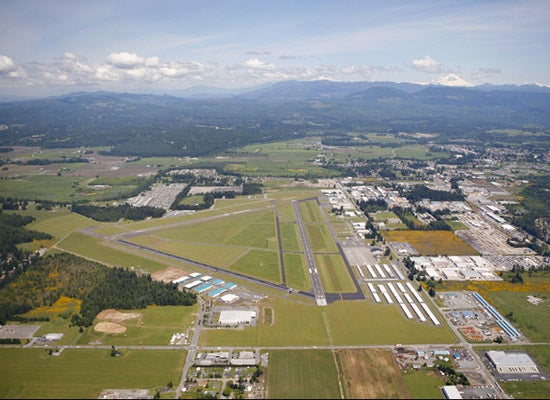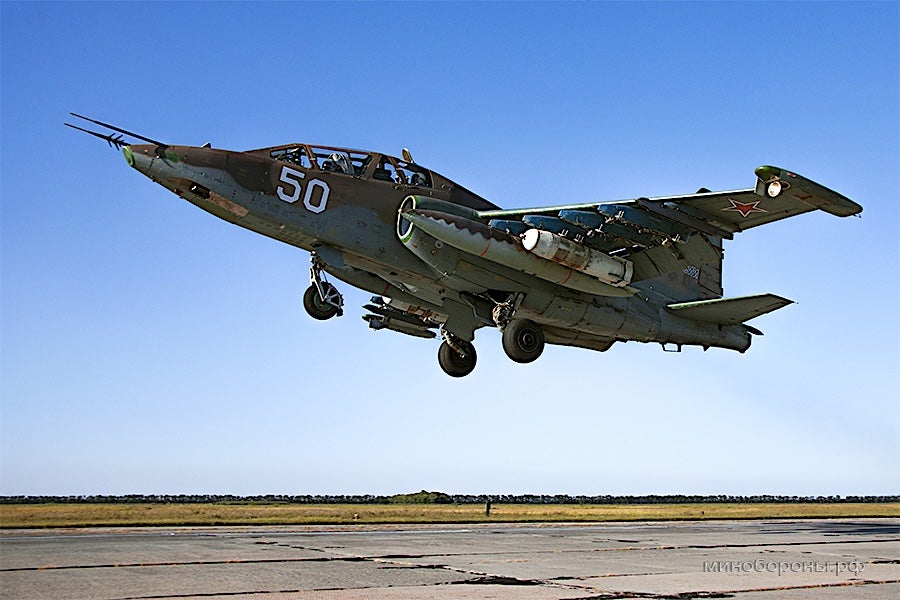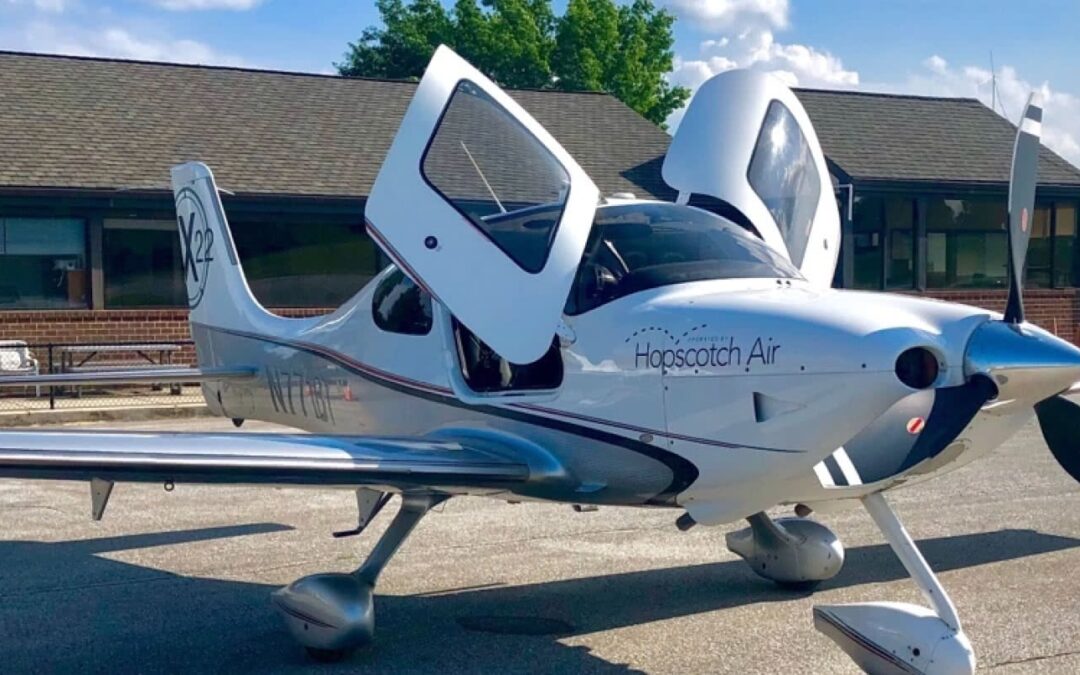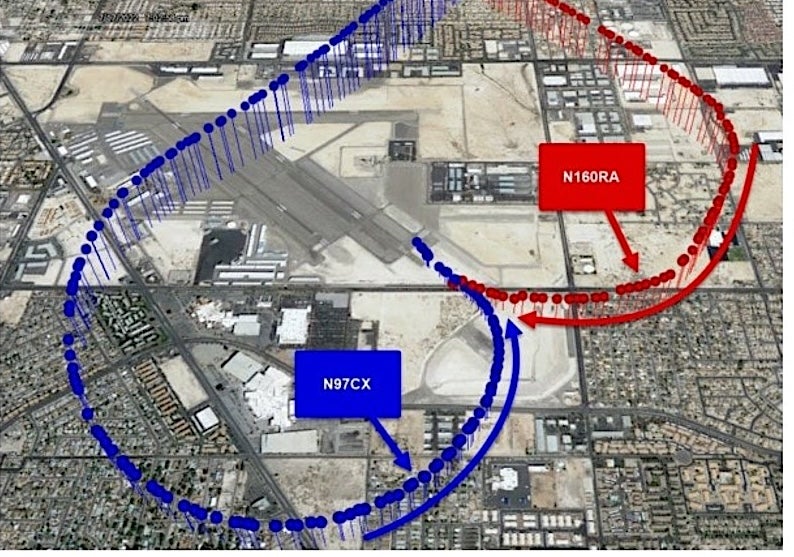NASA and Boeing are backing a startup that uses drones to conduct what it claims are faster, safer inspections for commercial airliners.
The space agency in a blog post last week revealed it is helping Pittsburgh-based Near Earth Autonomy develop the drone-based remote aircraft inspection system under its Small Business Innovation Research (SBIR) program. The partners claim the system—which Near Earth told FLYING is already in beta testing at seven defense bases nationwide—can cut inspection times from four hours to less than 30 minutes.
“Traditional inspections that require personnel to use a harness can take hours,” said Ken Jones, process improvement and innovation manager for the 436th Mission Generation Group at Dover Air Force Base (KDOV) in Delaware, one of those seven sites. “The drone completed its job in about 10 minutes.”
Near Earth is developing the drone-based inspection system under Proxim, a newly established business unit. According to the firm, which also works with aerospace titan Boeing, its two-year NASA contract draws from Civilian Commercialization Readiness Pilot Program (CCRPP) funding. That money is awarded to small businesses aiming to speed the commercial adoption of their technology.
The firm says its drone-based system improves not only speed, but safety. According to the Occupational Safety and Health Administration (OSHA), injuries to U.S. aircraft mechanics doubled to 30 in 2022 as the industry sought to rehire after a wave of COVID-induced layoffs. Near Earth’s solution could bring that number down by sending drones rather than humans to perform inspections at dangerous heights.
Per its website, the firm claims airlines and maintenance, repair, and overhaul (MRO) organizations could also recover an “average of $10,000 an hour in lost earnings during unplanned aircraft time on ground.”
The company told FLYING its system is compatible with airframes that tower multiple stories, such as the Bell Boeing V-22, Lockheed C-130, and a variety of Boeing models from the 737 to B-52, with more being added regularly. Defense bases across the country, from Delaware to Texas to Hawaii, are already testing it out.
“This thing is very precise, it can detect a loose panel, missing rivet, or paint elimination,” said Jones.
According to Near Earth, the system works indoors and outdoors, for any operator, at any time or location—with no infrastructure required.
The company maps out every inch of the aircraft as a digital data point on a 3D model, or digital twin, which the system uses to pick out inspection points for the drone. Its flight path is displayed to human personnel on a task card, which is computer programmed and based on preapproved FAA commercial aircraft inspection rules.
Once the aircraft is ready for inspection, personnel can sit back and allow the drone to fly around it, autonomously snapping high-resolution images. These are beamed to a cloud database, where inspectors can remotely scan for and flag defects. The photos are stored in a digitized archive, so workers can compare them with those from previous inspections. The user can also ask the system to create alerts that would send the drone back to areas that failed inspection or need reinspection.
So far, Near Earth’s solution has been limited to small trials for defense customers. But with NASA’s backing, the goal is to introduce it more widely. According to the space agency, the company over the past six years has conducted “several rounds of flight testing” on Boeing aircraft flown by American Airlines and Emirates Airlines.
“NASA has worked with Near Earth Autonomy on autonomous inspection challenges in multiple domains,” said Danette Allen, senior leader for autonomous systems at NASA. “We are excited to see this technology spin out to industry to increase efficiencies, safety, and accuracy of the aircraft inspection process for overall public benefit.”
While Near Earth says its drones follow flight paths based on FAA-approved inspection procedures, the regulations for such a system are a little murky. In April, the FAA asked industry to propose drone-based solutions for inspecting its facilities, but using a drone as the sole method for airport self-inspection, for example, is prohibited. The FAA did not immediately respond to FLYING’s request for comment.
Switching to drones could help airlines and MRO organizations save time and money. But the move could also alienate human workers who just experienced an outflux of labor during the pandemic.
FLYING reached out to the Professional Aviation Maintenance Association (PAMA) and Aircraft Mechanics Fraternal Association (AMFA), two of the largest aviation maintenance industry groups, for comment but did not receive a response.
Like this story? We think you’ll also like the Future of FLYING newsletter sent every Thursday afternoon. Sign up now.
The post NASA, Boeing Back Drone-Based Inspection of Commercial Airliners appeared first on FLYING Magazine.





